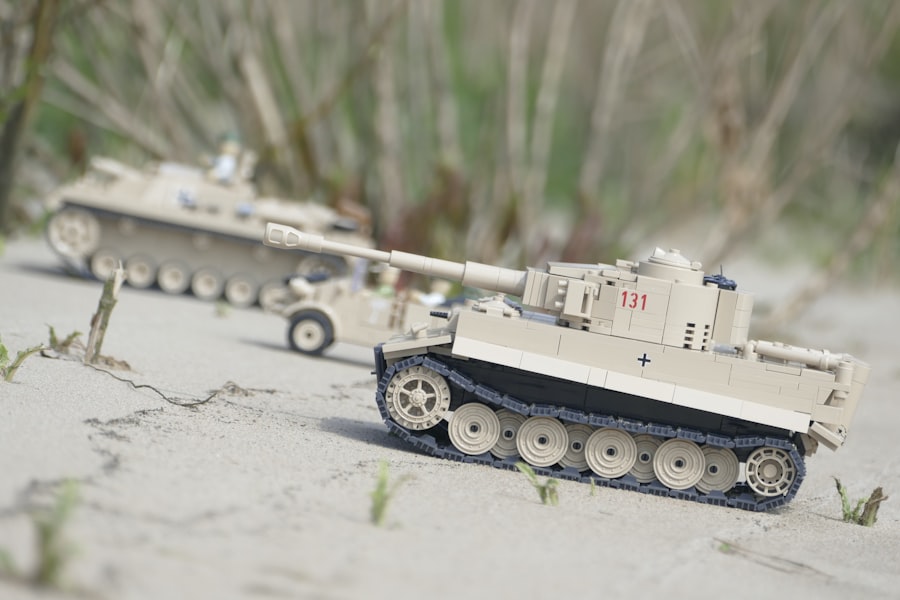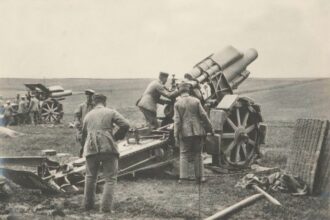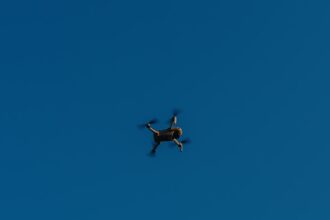In the realm of modern warfare, the integration of advanced technology has transformed military operations, offering unprecedented capabilities and efficiencies. However, this reliance on high-tech systems has not been without its pitfalls. High-tech military failure analysis serves as a critical examination of instances where technological advancements have not only fallen short of expectations but have also led to significant operational setbacks.
Understanding these failures is essential for military strategists, policymakers, and defense contractors alike, as it provides insights into the complexities of modern warfare and the inherent risks associated with technological dependency. The analysis of high-tech military failures encompasses a broad spectrum of incidents, from the malfunctioning of sophisticated weaponry to the breakdown of communication systems during critical missions.
By dissecting these failures, military analysts can identify patterns and root causes, ultimately leading to improved operational effectiveness and enhanced readiness for future conflicts.
Key Takeaways
- High-tech military failures can have significant impacts on operations and strategy.
- Common causes of high-tech military failures include technological limitations and human error.
- Training and education play a crucial role in high-tech military operations.
- Continuous evaluation and improvement are essential for success in high-tech military operations.
- Applying lessons learned is crucial for improving high-tech military operations in the future.
Understanding the Role of Technology in Military Operations
Technology plays a pivotal role in shaping contemporary military operations, influencing everything from logistics and intelligence gathering to combat tactics and battlefield communications. The advent of advanced technologies such as drones, artificial intelligence, and cyber warfare capabilities has revolutionized how militaries conduct operations. These innovations promise increased precision, reduced collateral damage, and enhanced situational awareness, allowing forces to respond more effectively to dynamic threats.
However, the integration of technology into military operations is not without challenges. The complexity of high-tech systems often requires extensive training and expertise, which can strain resources and lead to gaps in operational readiness. Furthermore, the rapid pace of technological advancement can outstrip the ability of military organizations to adapt, resulting in systems that are either underutilized or misapplied in the field.
As such, while technology offers significant advantages, it also introduces vulnerabilities that can be exploited by adversaries or lead to catastrophic failures.
Case Studies of High-Tech Military Failures

Examining specific case studies of high-tech military failures reveals the multifaceted nature of these incidents and their implications for military strategy. One notable example is the U.S. Navy’s Zumwalt-class destroyer program. Initially hailed as a groundbreaking advancement in naval warfare, the Zumwalt faced numerous challenges, including cost overruns and technical difficulties that hindered its operational deployment. The ship’s advanced stealth capabilities and innovative technologies were undermined by issues related to its combat systems and weaponry, ultimately leading to a reevaluation of its role within the fleet. Another significant case is the failure of the U.S. Army’s Future Combat Systems (FCS) program. Designed to create a networked force equipped with cutting-edge technologies, FCS was plagued by delays, budget constraints, and an overly ambitious scope. The program’s inability to deliver on its promises led to its cancellation in 2009, highlighting the risks associated with pursuing high-tech solutions without a clear understanding of their feasibility and integration into existing military frameworks.
Identifying Common Causes of High-Tech Military Failures
| Common Causes of High-Tech Military Failures | Metrics |
|---|---|
| Insufficient Testing | Number of failed tests |
| Complexity | Number of components |
| Supply Chain Issues | Number of delayed or faulty components |
| Human Error | Number of reported errors |
| Cost Overruns | Percentage of budget exceeded |
A thorough analysis of high-tech military failures often reveals several common causes that contribute to these setbacks.
In many cases, military organizations invest heavily in advanced technologies without fully understanding how these innovations will function in real-world scenarios.
This misalignment can lead to systems that are ill-suited for their intended purposes or that fail to meet the needs of frontline personnel. Another significant factor is the challenge of interoperability among various technological systems. As militaries adopt an array of high-tech solutions from different vendors, ensuring seamless communication and coordination becomes increasingly complex.
This lack of interoperability can result in critical failures during joint operations or when integrating new technologies into existing frameworks. Additionally, human factors such as inadequate training or resistance to change can exacerbate these issues, further complicating the successful implementation of high-tech systems.
The Impact of High-Tech Military Failures on Operations and Strategy
The ramifications of high-tech military failures extend far beyond immediate operational setbacks; they can also reshape strategic considerations and long-term planning. When advanced technologies fail to perform as expected, military leaders may be forced to reconsider their strategies and tactics, often reverting to more traditional methods that may not be as effective in contemporary warfare. This shift can create vulnerabilities that adversaries may exploit, undermining overall mission success.
Moreover, high-tech failures can erode trust within military organizations and among allied forces. When advanced systems do not deliver on their promises, confidence in technological solutions may wane, leading to skepticism about future investments in innovation. This erosion of trust can hinder collaboration with allies who rely on shared technological capabilities for joint operations, ultimately impacting collective defense strategies.
Lessons Learned from High-Tech Military Failures

The analysis of high-tech military failures provides valuable lessons that can inform future operations and decision-making processes. One key takeaway is the importance of realistic testing and evaluation before deploying new technologies in combat situations. Rigorous assessments that simulate real-world conditions can help identify potential weaknesses and ensure that systems are adequately prepared for operational demands.
Additionally, fostering a culture of adaptability within military organizations is crucial for navigating the complexities of high-tech warfare. Emphasizing flexibility in tactics and strategies allows forces to respond effectively to unforeseen challenges and capitalize on emerging opportunities. By learning from past failures and embracing a mindset geared toward continuous improvement, militaries can enhance their resilience in an ever-evolving landscape.
Strategies for Preventing High-Tech Military Failures
To mitigate the risks associated with high-tech military failures, several proactive strategies can be implemented. First and foremost is the establishment of robust project management frameworks that prioritize clear communication among stakeholders throughout the development process. By ensuring that all parties are aligned on objectives and expectations, organizations can reduce the likelihood of misalignment between technology and operational needs.
Investing in comprehensive training programs is another critical strategy for preventing failures. Personnel must be equipped with the knowledge and skills necessary to operate complex systems effectively. Ongoing training initiatives that incorporate lessons learned from past failures can help build a more competent and confident workforce capable of leveraging technology to its fullest potential.
The Role of Training and Education in High-Tech Military Operations
Training and education are fundamental components of successful high-tech military operations. As technology continues to evolve at a rapid pace, it is imperative that military personnel receive ongoing education to stay abreast of new developments and best practices. This commitment to continuous learning fosters a culture of innovation within military organizations, enabling them to adapt quickly to changing circumstances.
Moreover, simulation-based training programs can provide invaluable hands-on experience with high-tech systems in controlled environments. These simulations allow personnel to practice operating advanced technologies under various scenarios, enhancing their proficiency and confidence when deployed in real-world situations. By prioritizing training and education, militaries can better prepare their forces for the complexities of modern warfare.
The Importance of Continuous Evaluation and Improvement in High-Tech Military Operations
Continuous evaluation and improvement are essential for maintaining operational effectiveness in high-tech military environments. Regular assessments of technological systems can identify areas for enhancement or modification, ensuring that they remain relevant and effective in addressing evolving threats. This iterative process allows militaries to adapt their strategies based on real-time feedback from the field.
Furthermore, fostering a culture that encourages open dialogue about failures and successes is vital for driving improvement. When personnel feel empowered to share their experiences and insights, organizations can learn from both triumphs and setbacks. This commitment to transparency not only enhances operational effectiveness but also builds trust among team members, ultimately contributing to a more cohesive fighting force.
The Future of High-Tech Military Operations and Potential Challenges
As militaries around the world continue to invest in high-tech capabilities, several potential challenges loom on the horizon. The rapid pace of technological advancement may outstrip the ability of defense organizations to adapt effectively, leading to gaps in operational readiness or reliance on outdated systems. Additionally, as adversaries also embrace advanced technologies, the competitive landscape will become increasingly complex, necessitating constant vigilance and innovation.
Cybersecurity will remain a paramount concern as militaries integrate more interconnected systems into their operations. The potential for cyberattacks on critical infrastructure poses significant risks that could undermine high-tech capabilities during crucial moments. Addressing these challenges will require a multifaceted approach that encompasses not only technological solutions but also strategic planning and collaboration among allied forces.
Applying Lessons Learned to Improve High-Tech Military Operations
In conclusion, high-tech military failure analysis offers invaluable insights into the complexities of modern warfare and the challenges associated with technological integration. By examining past failures, identifying common causes, and implementing proactive strategies for improvement, militaries can enhance their operational effectiveness and resilience in an increasingly dynamic environment. The lessons learned from these analyses must be applied not only to current operations but also to future planning efforts as militaries navigate the evolving landscape of high-tech warfare.
Ultimately, embracing a culture of continuous evaluation, training, and adaptability will empower military organizations to leverage technology effectively while mitigating risks associated with high-tech failures. As they move forward into an uncertain future filled with both opportunities and challenges, it is imperative that militaries remain committed to learning from their experiences and applying those lessons to improve their capabilities on the battlefield.
In the realm of high-tech military failure analysis, understanding the intricacies of modern warfare technology is crucial. A related article that delves into the complexities of military strategies and the potential pitfalls of advanced technology can be found on the website “In The War Room.” This resource provides valuable insights into how military operations are planned and executed, and the role technology plays in both their success and failure. For a deeper exploration of these themes, you can read more in this article on In The War Room.
FAQs
What is high-tech military failure analysis?
High-tech military failure analysis is the process of examining and evaluating the causes of failures in advanced military technology, such as weapons systems, communication systems, and other high-tech equipment used by the military.
Why is high-tech military failure analysis important?
High-tech military failure analysis is important because it helps identify the root causes of failures in advanced military technology, which can lead to improvements in design, manufacturing, and maintenance processes. It also helps prevent future failures and ensures the reliability and effectiveness of military equipment.
What are some examples of high-tech military failures?
Examples of high-tech military failures include malfunctions in missile guidance systems, communication breakdowns in advanced military vehicles, and software glitches in military drones. These failures can have serious consequences and impact military operations.
How is high-tech military failure analysis conducted?
High-tech military failure analysis is conducted through a combination of technical investigations, data analysis, and testing. It often involves collaboration between engineers, scientists, and military personnel to identify and understand the factors contributing to the failure.
What are the potential outcomes of high-tech military failure analysis?
The potential outcomes of high-tech military failure analysis include the development of solutions to prevent similar failures in the future, improvements in technology design and manufacturing processes, and the enhancement of military readiness and effectiveness.




